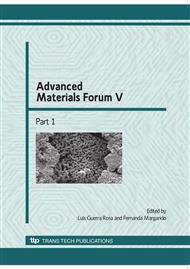p.1239
p.1244
p.1252
p.1258
p.1266
p.1272
p.1280
p.1286
p.1292
The Application of Fluorescence Microscopy and Scanning Electron Microscopy in the Detection of Delayed Ettringite Formation in Concrete
Abstract:
The degradation of concrete structures caused by delayed ettringite formation (DEF) is a problem that nowadays affects many concrete structures worldwide. This pathology is due to the formation of an expansive compound – ettringite - inside the material. This is a hydrated calcium sulphoaluminate produced by the chemical reaction between sulphate ions, calcium hydroxide and alumina present in the Portland cement paste. This product, normally formed during the hydration of cement, presents an acicular morphology (needles) that can be observed by scanning electron microscopy (SEM). However, DEF can also be formed after the setting of the cement causing, in this case, a deleterious expansion of the concrete. This secondary ettringite can also be produced after an excessive heating of the concrete, caused by a high amount of cement or by the use of heat cure. SEM has been used to distinguish between expansive and non expansive ettringite based normally in morphology analysis, since the former is characterized by a compressed or compact nature where the needle shapes disappear or are welded together. Furthermore, the use of other techniques, like X-ray diffraction or micro-XRF, has been limited because the compressed or compact ettringite is badly crystallized or even amorphous and the elemental composition is similar and therefore it is difficult to detect. This article presents a methodology for the diagnosis of DEF using polished concrete thin sections and combining polarised and fluorescence light optical microscopy with SEM-EDS.
Info:
Periodical:
Pages:
1266-1271
Citation:
Online since:
January 2010
Price:
Сopyright:
© 2010 Trans Tech Publications Ltd. All Rights Reserved
Share:
Citation:


